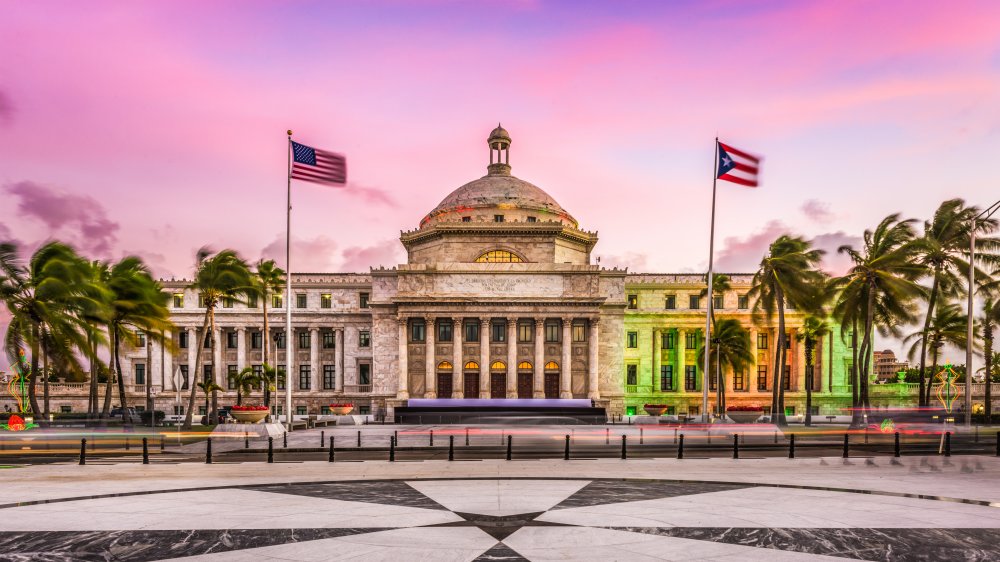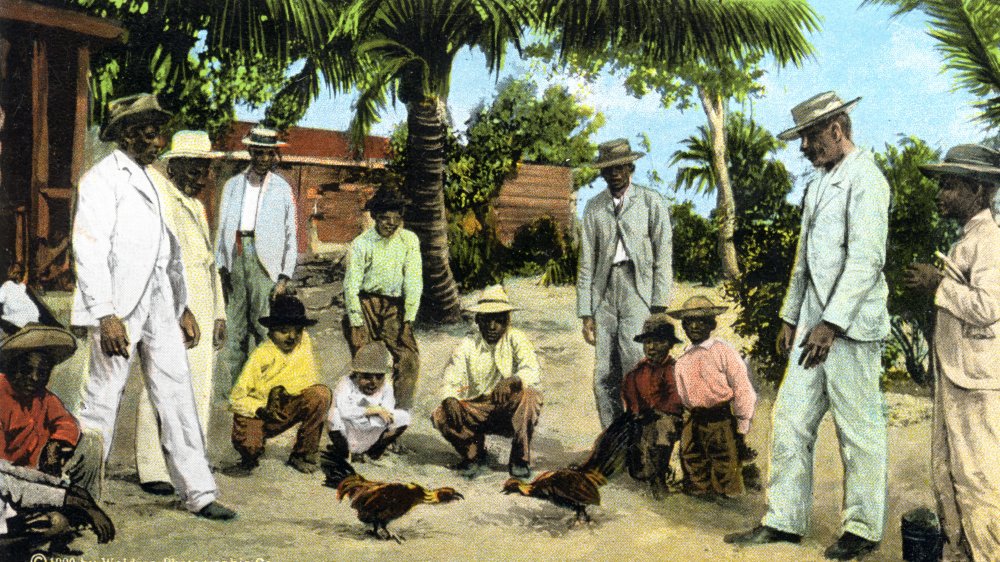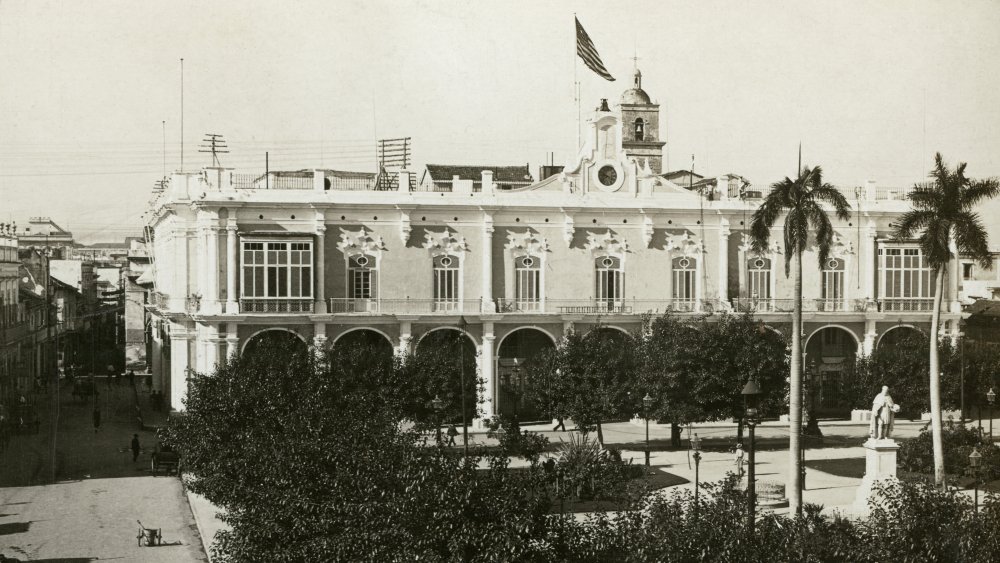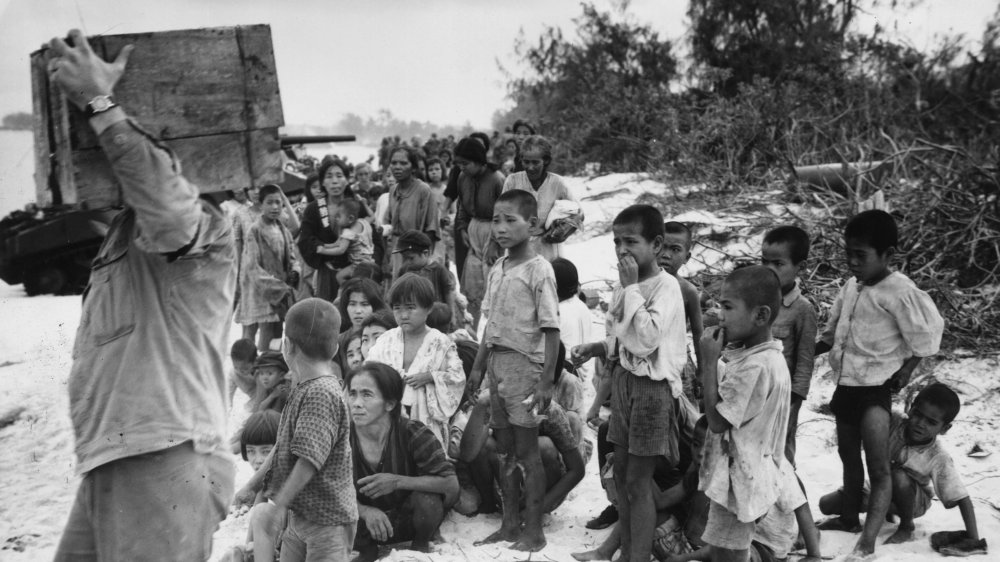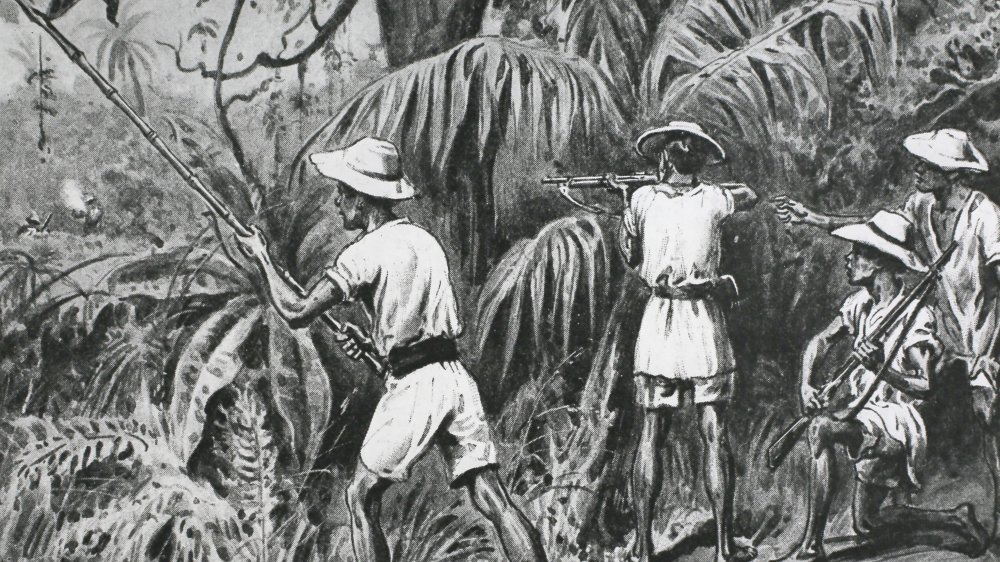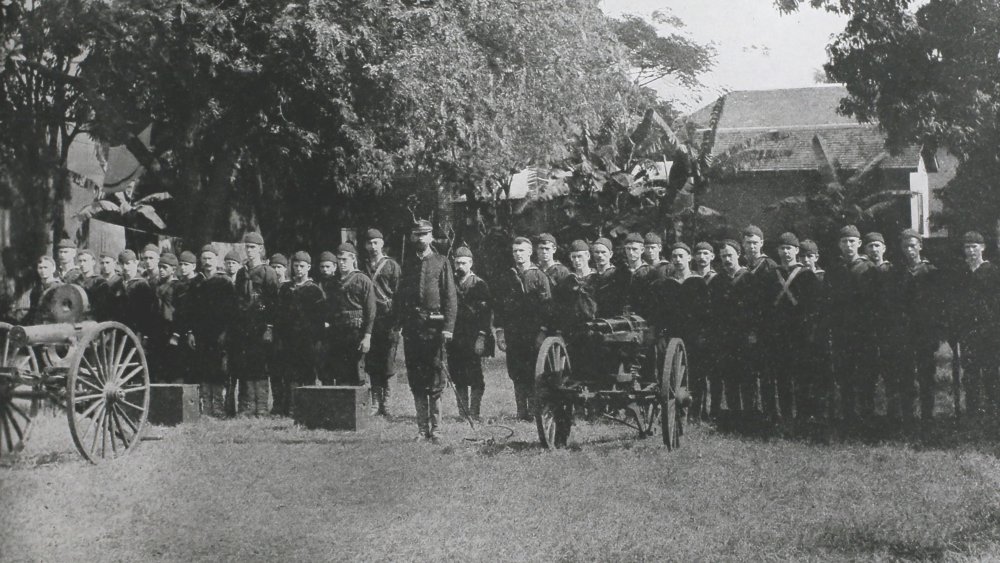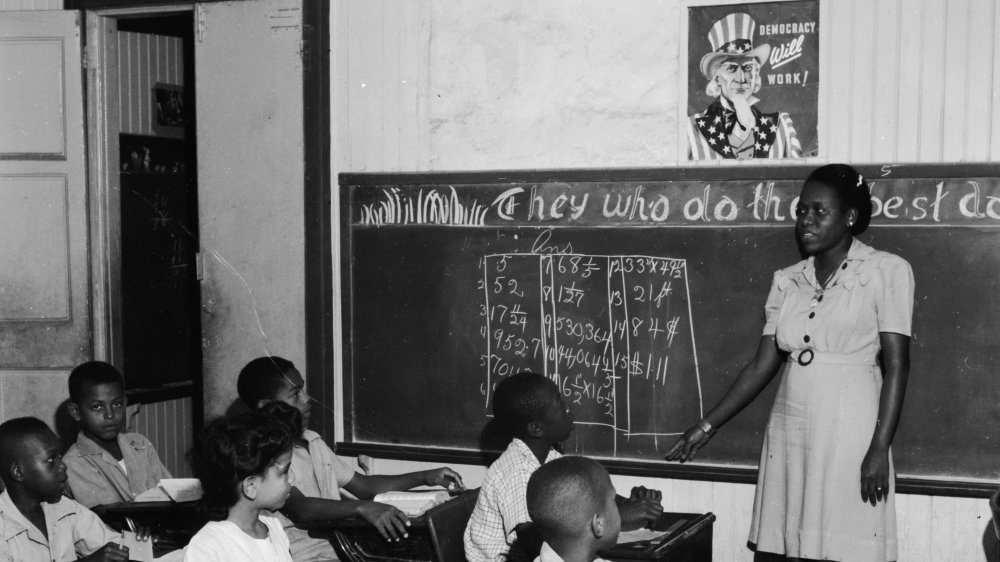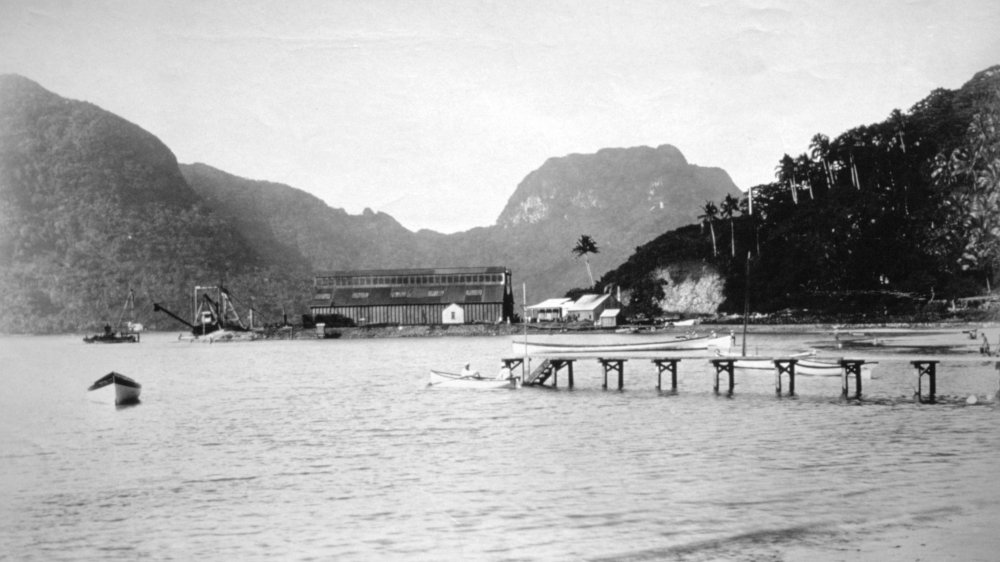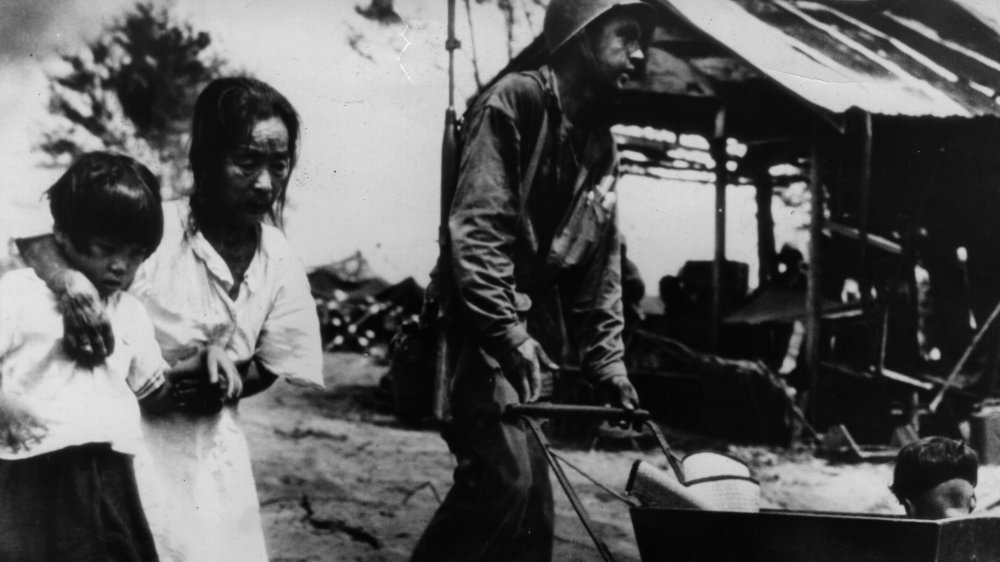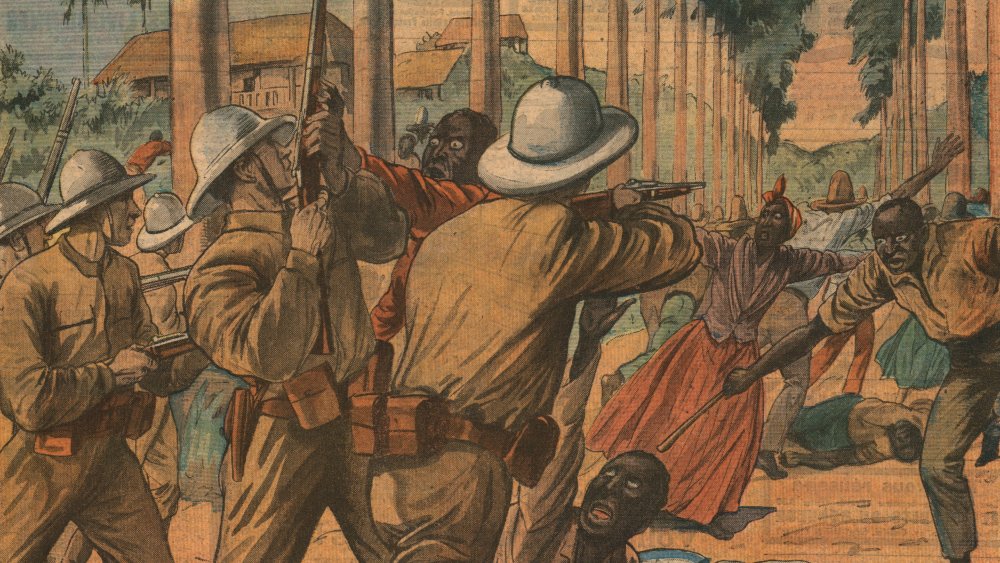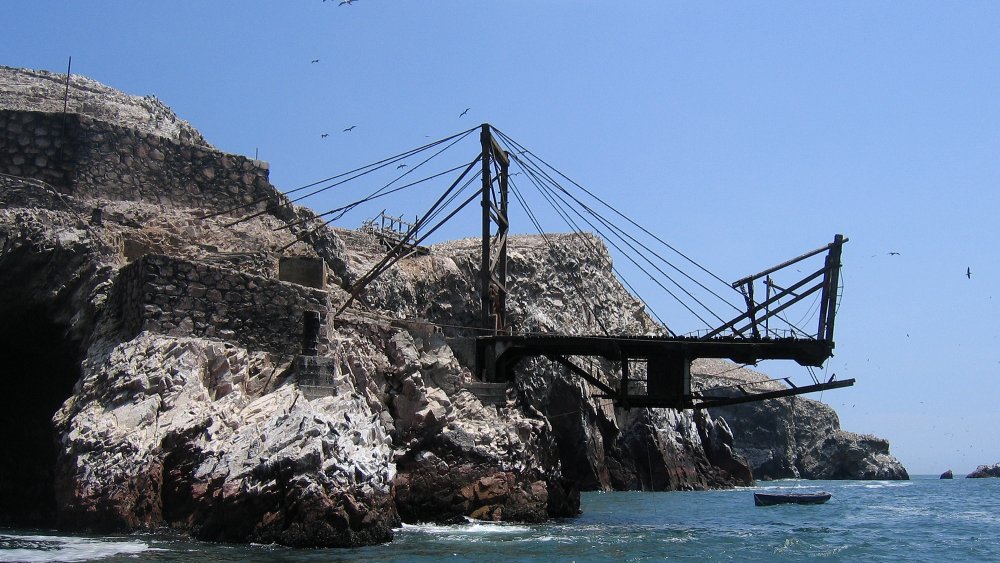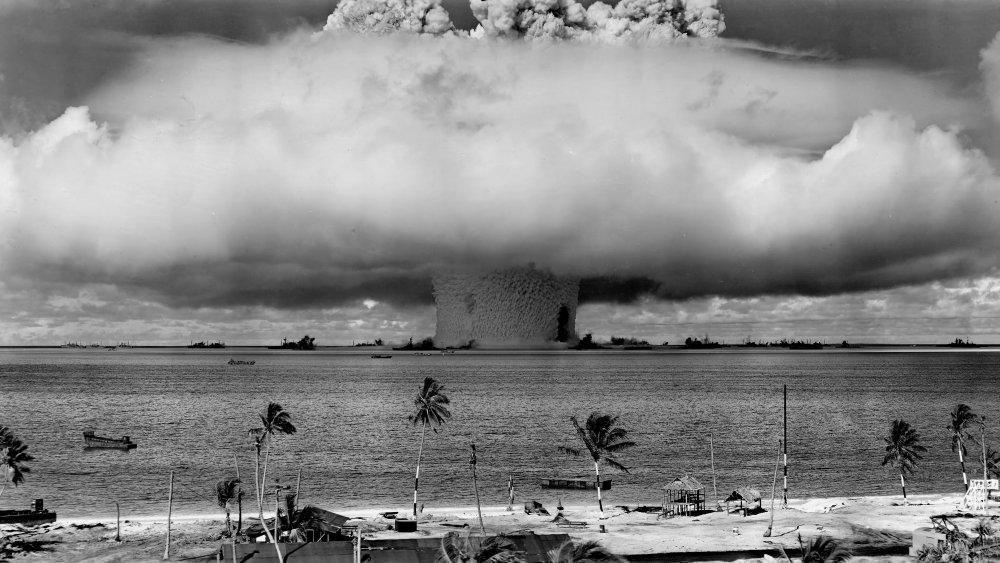Islands That The United States Has Stolen
It has been interesting to witness over the past few years how the once-celebrated Italian navigator and explorer Christopher Columbus has gone from a heroic figure to a genocidal menace. While there have been many falls from grace, this one, in particular, has a few interesting aspects that differentiate it from the standard fall-from-grace outline.
Unlike individuals like Jimmy Savile or Bill Cosby, Columbus' actions were not secret. According to History, Columbus' mismanagement and brutality in his colonies throughout the Americas led to him being arrested, sent back to Spain, and stripped of his noble titles. And unlike questionable media (i.e. blackface, cultural misrepresentation, whitewashing) where it took a few generations to correct these practices, Columbus, up until fairly recently, has been celebrated as an American hero.
The fact is that Columbus' name has become synonymous with the United States, to the point that he has a holiday and statues honoring his actions. As evident from the recent protest movements fighting systemic racism, police brutality, and class struggle, the traditions and practices the US engages in are difficult to criticize but need to be studied and corrected.
This includes the colonization and imperialism which was practiced by the United States. This has had devastating effects on the natives to lands conquered and controlled by the red, white, and blue. Here are some islands that the United States has stolen during its history.
Puerto Rico
According to History, in 1897, the island nation of Puerto Rico was granted self-rule by their Spanish colonizers. Just one year later, another imperial nation became the rulers of the country. In July 1898, the United States invaded the nation near the end of the Spanish-American War. The US hoped to establish a Western Hemisphere empire, and Puerto Rico fell in about a month.
Upon the US invasion of Puerto Rico, however, the native population met American troops with much hope. As Professor Lillian Guerra explained to History, American general Nelson Miles declared his intention on the island to "protect the life, liberty, and happiness of Puerto Ricans." The working class of Puerto Rico used their newfound American support to attack Spanish properties and businesses. After the Treaty of Paris in 1898 ceded the island nation to the US, the country ignored Puerto Rico's new democratic government and established the island as a colonized state, impoverishing the nation as the US focused on its coffee and sugar industries.
In what became known as the "Insular Cases" in 1901, the people of the territories ceded by Spain were argued to be "alien races." As such, the US Constitution did not apply to them, and they couldn't declare for statehood. Statehood for Puerto Rico is still a hot-button issue as, according to Vox, Puerto Ricans voted 97-percent in favor of becoming the 51st state in the US in a 2017 referendum.
Cuba
The origins of the Spanish-American War of 1898 can be found in Cuba just three years prior. Rising rebellions from the local Cuban people desiring independence from Spanish control led Spain to brutally repress the populace, as told by History. Anti-Spain sediment began to fester in the US through sensational yellow journalism depicting Spain in a negative light, pushed further by the sinking of an American battleship in 1898, though the origins of its destruction have been greatly contested.
Following Spain's defeat, Cuba was included as spoils for the victorious United States. However, because of the Teller Amendment to the country's war resolution, Cuba was not annexed by the United States, though it effectively became a protectorate in a coerced treaty in 1903. According to the Khan Academy, Cuba was not a part of treaty negotiations, and under the Platt Amendment, Cuba permitted diplomatic, economic, and military intervention and a lease on Guantanamo Bay to the United States.
While the upper and middle class in Cuba thrived during the years as a US protectorate in large part because of the sugar investment made, the poor majority class struggled immensely, as told by PBS. Malnutrition, widespread poverty, lack of health care and education, and unemployment were common to Cuban life. Similar to the United States, racial lines were drawn as well, with Black and mixed Cubans being denied services. These issues and anger toward the US eventually led to a successful communist revolution in 1959 in which Fidel Castro took power in Cuba.
Guam
Similar to Cuba and Puerto Rico, Guam was one of the many islands ceded by Spain to the United States. However, Guam held an importance during the conflict that was unique: According to Sutori, the United States viewed Guam as a strategic base of operations for their main target, the Philippines.
In a clear example of gunboat diplomacy, a US battleship arrived, ready to do battle with the Spanish troops occupying the Pacific island. Story Maps states that after half an hour of discussion between Spanish and American troops, Spain surrendered the island to the US without a single casualty. With Guam, the US had both a trading bridge between themselves and the Asia market, as well as a base for military personnel. These reasons, as well as being able to hold a major airport and a protected harbor, led Japan to take the island during World War II as their nation hoped to build an empire of their own in Asia and the Pacific.
According to Guampedia, when the US retook the island during their island-hopping campaign in the Pacific theater of WWII, it became a launchpad to decimate Japan with bombs throughout the remainder of the war. Guam became invaluable to the US throughout the Cold War era as a base of support against the rising tide of communism in Asia.
The Philippines
In the tales of the Spanish-American War, a common theme is found where the citizens of various islands desired independence from Spanish rule, gained their independence from Spain, and then were annexed by the United States. According to History, Spain controlled the Philippines for about 300 years before an independence movement sprang up in the late 19th century.
Led by Emilio Aguinaldo and supported by the United States, the Filipino independence movement fought their Spanish colonizers in the lead-up to the Spanish-American War, according to United States Imperialism. However, cries for independence following Spain's defeat fell on deaf ears in the United States, and another war began between the US and the Philippines. Unlike the Spanish-American War that lasted less than a year and had strong support because of anti-Spanish sentiments, the Philippine conflict lasted officially three years, faced an anti-war movement at home, and was costly in terms of American lives.
According to the US State Department's Office of the Historian, the war began two days before the Treaty of Paris was ratified, when fighting broke out between Emilio's forces and American troops. In the first months of the war, Aguinaldo attempted to fight conventionally with little success before switching to guerrilla warfare. The US eventually captured Aguinaldo, ending his guerrilla campaign in 1901 and securing victory, though insurgent violence continued sporadically until 1913, Britannica says. About 20,000 Filipino combatants and 200,000 citizens were killed during the conflict. The US lost 4,300 men, mostly from various diseases.
Hawaii
Hawaii is the only state in the US that is not connected to any landmass in North America. Unlike many of the other nations on this list, Hawaii was able to maintain their independence from European colonizers, though Europe certainly had influence in the nation with forced treaties. However, during the 1890s, at the height of the United States' Gilded Age, economics, imperialism, and colonization combined into the annexation of the Hawaiian islands for the US.
According to US History, interest in Hawaii began in the United States in the 1820s when missionaries arrived on the island. Soon after, American capitalists took an interest in the Hawaiian sugar market, and profits grew well into the 1890s. However, with the ascension of Queen Liliuokalani and economic depression, both sides knew the dam was soon to break. The queen wanted a return to pre-foreigner tradition, and American businesses wanted annexation.
On January 17, 1893, a group of white sugar planters and 300 Marines overthrew Queen Liliuokalani and established Sanford B. Dole as the president. According to History, the queen's deposing was enacted to "protect American lives" and organized by Dole. Following this, anti-imperialist President Grover Cleveland re-established the queen and the old constitution of Hawaii, but Dole refused to step down or recognize either. Cleveland, meanwhile refused to use military force on the islands. President McKinley, on the other hand, had no problem annexing the nation in preparation for the Spanish-American War.
The Virgin Islands
Unlike many other islands, it was not through a war that the United States came into possession of the Virgin Islands but instead the same way the country obtained the Louisiana Territory: They bought it. Though this can be interpreted as a purchase and not theft, the US didn't buy the island from the residents but rather from their colonizers, Denmark.
According to History, on March 31, 1917, after five decades of negotiation, Denmark sold the islands of Saint Thomas, Saint John, and Saint Croix to the United States for $25 million in gold coins. The islands are the only permanently inhabited US territories that were purchased from another imperial power. Today on the islands, the day is celebrated as "Transfer Day."
The United States Department of State says that while the goal of buying the territories, known then as the Danish West Indies, from Denmark began in 1867, it was another European nation that pushed the US into the purchase. President Woodrow Wilson and Secretary of State Robert Lansing feared that Germany would take the islands to use as a base to launch naval attacks. During World War I, Germany attempted to control the seas by attacking ships that provided aid to the Allies. In 1915, Germany destroyed the British ship RMS Lusitania, killing, among nearly 1,200 passengers, 128 US citizens. Two days after the US bought the Virgin Islands, President Wilson spoke before Congress, requesting a declaration of war against Germany.
American Samoa
Similar to the Virgin Islands, American Samoa was originally a two-colonial nation affair before the United States took complete control. In 1899, the nation was divided between the two emerging superpowers of the period, the western half belonging to Germany and the eastern half belonging to the United States. Five years later, the US had full possession of both the western and eastern islands. The acquisition came following nearly two centuries of political shenanigans with the native population.
In 1722, Dutch explorer Jacob Roggeveen came across Samoa, leading to a rush of Europeans to the islands over the next century and a half. The US established its first naval base at Pago Pago Harbor in 1878. By the 1880s, Germany, the US, and Great Britain all battled for possession of the islands. When intertribal war broke out, the three nations assisted the tribes in their battles, according to GlobalSecurity.org. In the 1899 Treaty of Berlin (ratified in 1900), the US and Germany split the islands.
From 1900 to 1951, the United States used American Samoa as a strategic naval base while leaving the Samoan leadership with little power in their land. Following the string of wars in the first half of the 20th century, the US transferred control of the islands to the Department of the Interior. According to the DOI, American Samoa, independently of the United States, adopted its own constitution in 1967 and held its first constitutional election in 1977.
The Northern Mariana Islands
The Northern Mariana Islands, like the rest of the Pacific, spent the late 19th and early 20th centuries being fought over by the United States and the European powers. The question of ownership of the islands wasn't answered until after World War II, and they didn't become a commonwealth until, according to UC Santa Barbara's American Presidency Project, the Reagan administration made them so in 1986.
According to Guampedia, explorer Ferdinand Magellan came across the Marianas in 1521 during his journey to discover a western route to the Spice Islands. It took more than a century for proper colonization to begin. In 1668, Spain colonized the islands, bringing them under a single government for the first time in their history and renaming them after their queen regent, Maria Ana de Austria. By the end of the 19th century, however, the islands were in distress, and the US was sniffing around the region.
Following the Spanish-American War and the annexation of Guam, it was only natural that the US took the rest of the Mariana Islands. However, in order to not come off as greedy, they left the rest of the archipelago alone. Because of this, Germany was more than happy to sweep in and buy the Mariana Islands (aside from Guam) and the Carolines from Spain in 1899. However, the islands soon changed hands to Japan following Germany's defeat in the World War I. Then, following Japan's defeat in World War II, the US took control of the Northern Mariana Islands in 1947.
Haiti
In 1915, the island nation of Haiti was in social, political, and economic disarray. The powers of Europe were entering the First World War, and the United States looked to shore up their empire around the Caribbean. According to the US State Department's Office of the Historian, between 1911 and 1915, seven Haitian presidents were either assassinated or overthrown, leading President Woodrow Wilson to send the US Marines to Haiti in December 1914. By 1915, another assassinated president led the US to begin a 19-year occupation of Haiti.
The Haitian occupation ended more than a century of self-rule and independence for the once-enslaved nation. On January 1, 1804, following 13 years of revolution against their colonial masters in France, Haiti formally declared themselves independent, becoming the first free Black state in the Western Hemisphere. According to Brown University, France and the other colonial powers of the time, including the United States, sought to isolate Haiti in order to prevent further slave revolts in their own countries. It was this and a roughly 100 million-franc indemnity they had to pay to France that severely impoverished the young nation and set the stage for US conquest.
According to The New Yorker, the US occupation was filled with violence inflicted upon the native Haitian population. During the almost two decades of occupation, 15,000 Haitians were killed. Construction efforts in the country were made through forced labor, and while the United States pulled out troops in 1934, the US maintained financial control over the nation until 1947.
Navassa Island
According to The Christian Science Monitor, Navassa was claimed by Haiti following its independence in 1804 from France. The island is only 40 miles west of the nation, but the US, well before their colonization period of the late 19th century, claimed sovereignty in 1857. This was due to the discovery of guano, a natural agricultural fertilizer, on the island, and the US passed a law to justify the annexation, ignoring Haitian sovereignty. The Guano Act of 1857 claimed any unoccupied island with guano as US property.
Diplomatic historian Roy F. Nichols discussed the legacy of this decision in his 1956 book, Advance Agents of American Destiny: "The American nation took its first step into the path of imperialism; Navassa, a guano island, was the first noncontiguous territory to be announced formally as attached to the republic."
Unlike other islands, Navassa was uninhabited. However, this did not mean violent conflict was never present. American companies used Black labor to mine guano on the island, and in 1889, African American workers rose up and killed five cruel white supervisors. Three of the African Americans were sentenced to death for murder, while 37 other men were given lesser charges and sentences. Upon mounting pressure in support of the men, President Benjamin Harrison commuted the sentences to life in prison.
According to the Department of the Interior, the US ended operations on the island, though it still claims ownership of Navassa, ignoring Haitian claims of sovereignty.
The Marshall Islands
Does this sound familiar? Spain has a colony, and by the late 19th century, they lose the colony to a stronger colonial power. That tended to happen a lot with Pacific and Caribbean island nations during this period. However, it was Germany that first took the Marshall Islands from Spain in 1885, according to the BBC. The islands did not fall into US hands until the defeat of the Axis Powers in World War II.
Unfortunately, the end of the war did not mean peace for the residents of the Marshall Islands. In 1946, the US launched Operation Crossroads on Bikini Atoll, testing nuclear weapons on the island and forcing the residents to evacuate. Two years later, the residents of Enewetak Atoll were forced to evacuate as the testing continued. Today, many natives are dealing with diseases from radiation poisoning from the nuclear tests. The LA Times reported that between 1946 and 1958, the US detonated 67 nuclear devices on the Marshall Islands, with a combined radioactive output of 7,000 Hiroshima bombs.
The period of US administration on the islands ended in the 1980s. According to the US Department of State, the Marshall Islands signed a Compact of Free Association with the United States in 1983 and gained independence three years later. Still, the islands' security and defense, as well as their main economic partner and aid provider, remains the US. The US also rents Kwajalein atoll as a base and for missile testing, the BBC reports.
